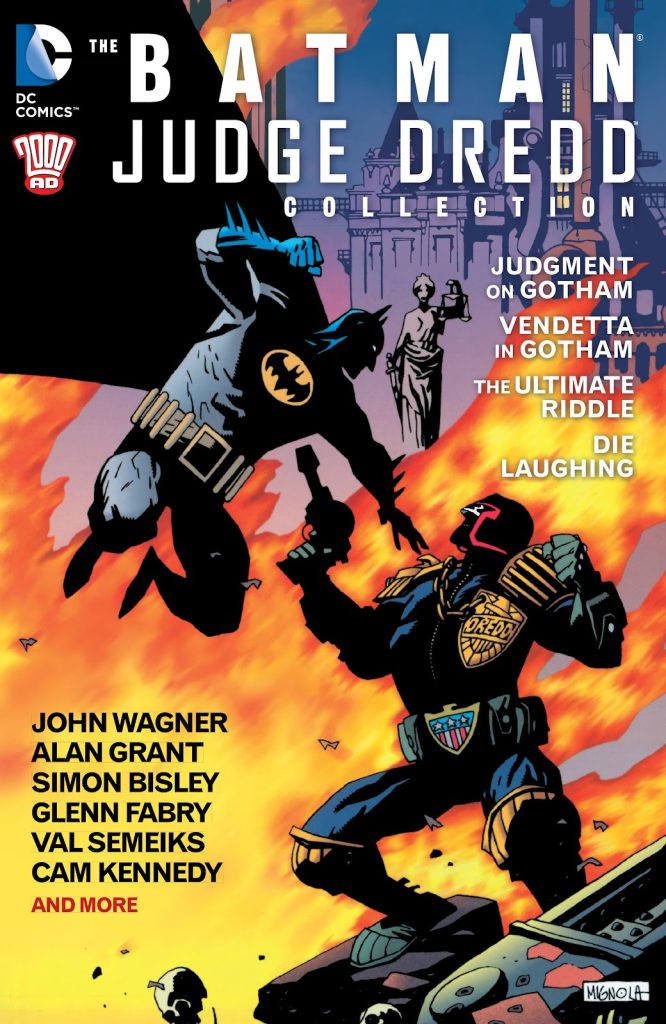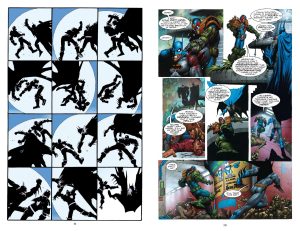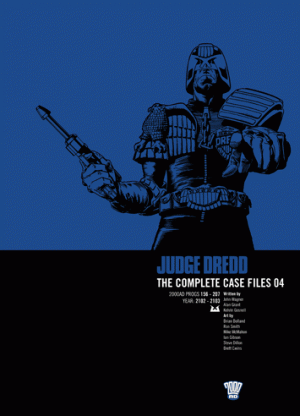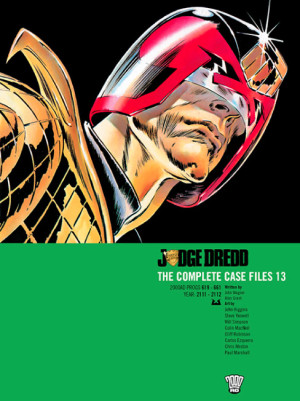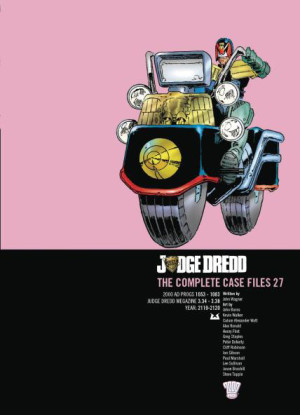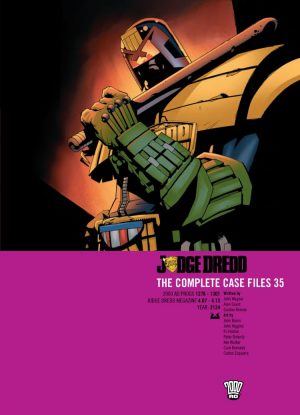Review by Frank Plowright
The gritty Gotham of the late 20th century and Judge Dredd’s futuristic world may seem as fundamentally incompatible as Batman and Dredd, but all are merged for four outings here, along with the bonus of Dredd meeting Lobo.
In their original printings DC and Fleetway took different paths. DC stuck exclusively to their prestige format comics, dropping below the criteria for a graphic novel guide, while UK editions of Judgement on Gotham and The Ultimate Riddle were released as album-sized graphic novels.
Both rely on painted art, with Simon Bisley on the first a standout, wild and exciting, his Batmobile something to be seen to be believed. There’s a fair stab at the supporting casts, and it’s much better than the Riddler’s appearance, which is structured like a video game. Follow the links for more detailed reviews.
It’s some contrast between Bisley’s art and Cam Kennedy for ‘Vendetta in Gotham’, but Kennedy’s on top form for Dredd’s visit to Gotham to deal out what the law has coming (sample spread left). More so than the first story, Alan Grant and John Wagner inject humour via keeping up to date with what Scarface and the Ventriloquist are up to as Batman and Dredd clash. What at first seems two unrelated plots are smoothly connected and the writers set up what was intended as the following ‘Die Laughing’, but that became a legendary lost story before eventually seeing print five years later in 1998.
Perhaps the reason is it being the longest of the Dredd/Batman team-ups, Glenn Fabry draws just over a third himself before working with Jason Brashill and Jim Murray, while Murray (sample spread right) completes the story. It’s all painted to magnificently high standards, and anyone wondering why the Joker took so long to appear in a Dredd team-up need wonder no longer. Under Fabry he’s almost Michael Jackson, but Murray’s version is altogether less connected to sanity. It doesn’t quite match the Bisley outing, but ‘Die Laughing’ certainly hits the spot. Wagner and Grant’s script sparkles, their plot holds together well, and Batman in Mega-City One is more fun than Dredd in Gotham, where the latter’s futuristic technology gives him an advantage. Even more fun is the Joker in Mega-City One accompanied by Judge Death for the sealing of the Megasphere, in which 10,000 hedonists intend to spend the remainder of their lives. The plot and mystery are largely front-ended while Murray paints the ensuing mayhem and Wagner and Grant provide him with the visual set pieces. It might have taken three artists, but the fun is had.
Dredd teaming with Lobo being subtitled ‘Psycho Bikers vs. the Mutants From Hell’ indicates you shouldn’t be looking for the answers to existential problems. The pairing is possible via the maguffin of the dimension belt, used in the previous stories, and the mutants are those lurking in Mega-City One’s literal underworld. Lobo teaming with Mean Machine is great, as is his joyful acceptance of the future’s lunacy. Val Semeiks draws it all with a love of excess not seen since Bisley’s pages opening the collection.
Don’t come here expecting enlightenment, but for the fun of Batman and Dredd bumping chins.
